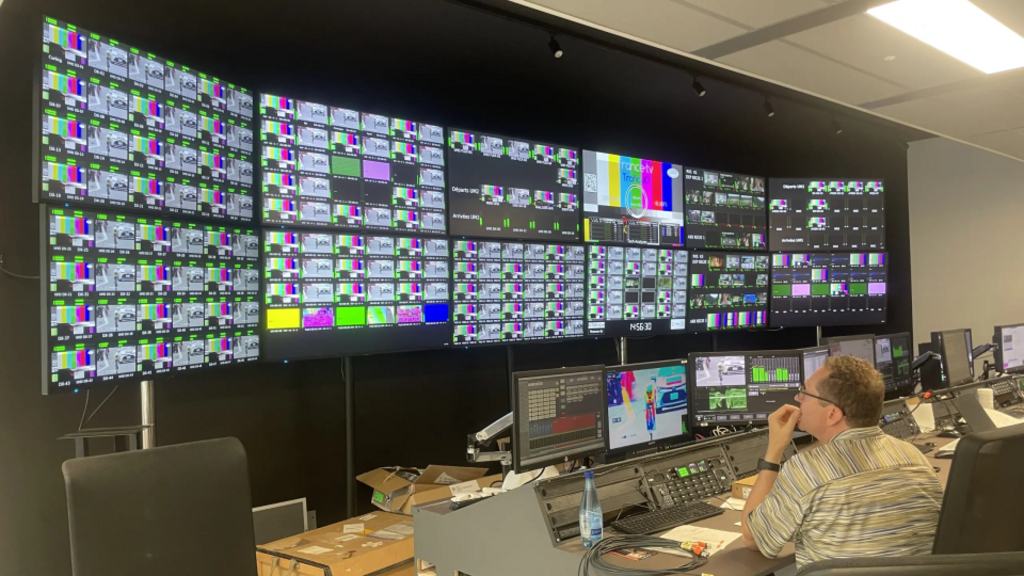First Meeting
Streamroot is one of those "start-ups" that make life easier for international media companies, major users of streaming videos such as France Télévisions but also TF1, Canal +, Eurosport or Dailymotion.
Very active, they are developing a distributed Internet broadcasting solution that improves the user experience while reducing the cost of broadcasting live or VOD content. This technology not only reads content from a remote server, but also adds a data exchange intelligence between the viewers of the same program, thereby decongesting the bandwidth needed to broadcast content from the server. The technology - called Streamroot DNA - is based on a software approach that mutualizes the resources available on each computer, allowing the latter to be both client and server, commonly known as a peer-to-peer exchange system.
The broadcasting technology developed allows for decentralized exchanges without the need for a particular infrastructure (servers), thus facilitating file sharing and communications during streaming.

The challenge
In May 2013, on the occasion of the French Open at Roland Garros, France Télévisions proposed a 4K(1) Ultra HD(2) broadcast on LG TV via Eutelsat's satellites. Based on this recent innovation, a challenge is proposed to the three young students by the Innovation service: multiply the difficulty by four by broadcasting the same service on the Internet in Ultra HD 4K format. The stakes are high, as usage is moving towards this type of digital broadcasting. The more video users there will be using "Peer to Peer Ultra-HD", the more beneficial the system will be in relieving the operators' networks. This new path for Ultra-HD streaming should attract the interest of manufacturers of mass market equipment by integrating this new intelligent broadcasting system.
The challenge was met and, after three months of work, a prototype was produced, which will be presented on the France Télévisions stand at the Paris Le Web 2013 exhibition.
At the same time, Streamroot was awarded the digital start-up trophy with a prize worth €75,000 and the Coup de pouce centralien prize in 2014.

Birth of a Company
Pierre-Louis Théron, Axel Delmas and Nikolay Rodionov were selected by the prestigious Techstars Boston, one of the two most renowned American startup accelerators, and in three months, thanks to their hard work, they acquired the spirit of an "American-style entrepreneur". This also earned them an opportunity to be introduced to major media and video players, to sign a partnership and to quickly raise 2.5 million dollars...
The time of evidence
When they returned from the United States, contact was resumed with France Télévisions' digital technical teams, but it is really only from 2016 onwards that the audiovisual public group will work with Streamroot through POC(3) :
This innovative technical solution is free for the viewer and significantly increases the speed of video loading, reduces the cost of bandwidth and ensures a better quality of service, especially for medium-quality connections. The improvement that has been observed is shown by the "buffering (4) ratio" which, in less technical terms, consists of measuring the time spent storing the video in memory (loading time).
The indicators below summarize the main results obtained:
• Buffering ratio: from 7,500 simultaneous users, the Streamroot solution reduces the buffering ratio. For the range of 15,000 simultaneous users and more, Streamroot reduces the buffering ratio by 9% compared to the average value without Streamroot".
• Bit rate: from 5,000 simultaneous users, the Streamroot solution increases the bit rate. From this point on, Streamroot increases the bit rate(5) by 5% compared with the average value without Streamroot.
And finally...

These tests in real conditions confirmed the france.tv teams in the relevance and value of peer-to-peer solutions. It has also contributed to our expertise and research in this area. A consultation with a view to deploying such a solution was launched at the end of 2018. Streamroot's proposal was finally selected among others, thanks in particular to a relevant, highly detailed proposal that was particularly well adapted to the needs of the technical services of the Digital Department of france.tv.
Notes
(1) Ultra HD: ultra high definition
(2) 4 K: digital image format greater than or equal to 4096 pixels
(3) POC: Proof of Concept
(4) Buffering: Zero buffering time is when a video plays smoothly without interruption, while high buffering time is when you have to wait for the video to load.
(5) Bit rate: The bit rate is expressed in bit/sec in telecommunications and is equivalent to one byte. A "bit per second », used in computing and telecommunications, is called a "bit rate".
 Back
Back
 Open Innovation
Open Innovation











